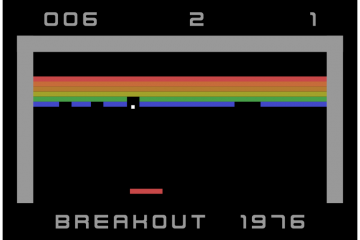At Telescoped we believe that remote work is one of the most important changes of our lifetime. The shift in how we work is also one of the key drivers towards our mission of bringing opportunity, autonomy and purpose to the talented people of the world. Remote work is leveling the playing field and connecting people in a way that simply wasn’t possible just a few years ago. The opportunities that are opening around the world regardless of location are incredible, yet many people are struggling to make remote work, work for them – what is happening?

In software engineering, remote work isn’t something new. It’s a practice that the most forward thinking teams like 37 Signals have been perfecting for many years. For our profession, working remote is a mindset that has evolved for more than a decade and along with it new tools have matured. Software developers can be incredibly productive and collaborate in a very effective way without the need to step into an office. However, this isn’t the case for everyone.
Why doesn’t remote work always work?
Unclear remote work rules and subpar systems
First and foremost remote work doesn’t just happen. In order for it to work, a company needs the right remote work framework as well as a deliberate effort from the team to embrace this new paradigm. Matt Mullenweg talks about the five levels of autonomy in distributed work where he describes how companies go from synchronous work towards asynchronous work. For most people the recent work from home experiment has been difficult because companies weren’t ready from a systems point of view and our home setups weren’t equipped for us to be truly productive. In other words, we were still trying to figure out how to adapt to the new medium, on top of that we were forced to do this while we were also trying to continue getting stuff out the door. Without the right systems and processes in place, remote work can be frustrating.

Your home office setup really matters
For some, working from home means going down to a basement and sitting in an uncomfortable chair with a small laptop monitor on top of an unstable foldable table or cardboard box. For others, it means working in a beautifully lit room, with dual monitors, an ergonomic chair and an expensive DSLR camera aimed at you to make your video as crisp as real life. Clearly, these two people will have very different experiences working from home. For those companies that embrace remote work, investing in your teams at-home setups should be a priority, otherwise the outcome might not be what everyone is expecting.
Beyond the physical setup, there are also the realities that different people face when it comes to responsibilities at home. For some this means taking care of children or an elderly parent. Regardless of whether you have arranged for someone to help you or not, it’s very hard to not get interrupted if you’re trying to work with your child calling your name from the other room or even worse across the dining table. In a way, the flexibility of remote work can become a double edged sword unless you are very deliberate in the way you approach it.
Different roles and different personalities have different needs
When it comes to ways of working and communicating, we’re not all created equal. Some people are extroverts and they get their energy from interacting with others, while others are more introverted and enjoy having some alone time to gather their thoughts and be productive. At the same time, many people really identify with their work relationships and spending time with friends from work is critical for their wellbeing. Others might have a different approach to work relationships, always keeping a distance because their support network comes from friends outside of work or from family. Neither one is right or wrong, but the effects of not having an office will impact them very differently.
Furthermore, different disciplines approach their work settings differently, because they each have different needs. A well run remote engineering team has a well documented backlog. They also have clearly scoped stories with their corresponding design assets as well as success criteria for the delivery of those tasks. The team works together during the sprint planning session to assign points to each story, thus determining what they can commit to for the following sprint. Under this setup, the best working environment for engineers tends to be a quiet, calm place where they can work uninterrupted and get in the zone. Remote work can be perfect for doing deep work as an engineer (as long as you take care of the two points above).
Other professions require much more interaction on a day to day basis to be productive. For example, groups of architects who need to comment on a given design, building a visual representation through collaborative brainstorming. For these people, working from home can be more challenging. Needless to say, this could also be done remotely, but it would require different tools and a retraining on how to work to be effective. One could argue that a creative process can happen both synchronously through a live discussion or asynchronously through comments on a shared virtual workspace, but then it becomes a question of style. Many people are used to working in a certain way and that feels better and more productive to them.
What is the answer to make remote work work?
When it comes to remote work, things don’t have to be all or nothing. For certain teams, fully remote and asynchronous might be the answer, but that’s not the case for every person or every team.
According to a survey by JLL of over 2000 office workers worldwide, 3 in 4 workers want to return to the office. We have learned a lot during the last year and people’s thinking about what purpose the office serves for them has evolved. Most people want to go back in a hybrid model, where they get to work from home a few days a week. Making sure you offer your team the flexibility they need and take into account personalities and roles to ensure they can work effectively in this new normal of work. Remote work is here to stay and you need to have a plan to make it work for your company.



0 Comments